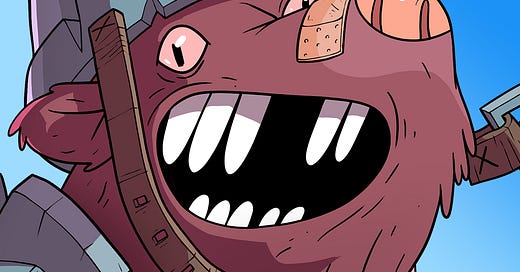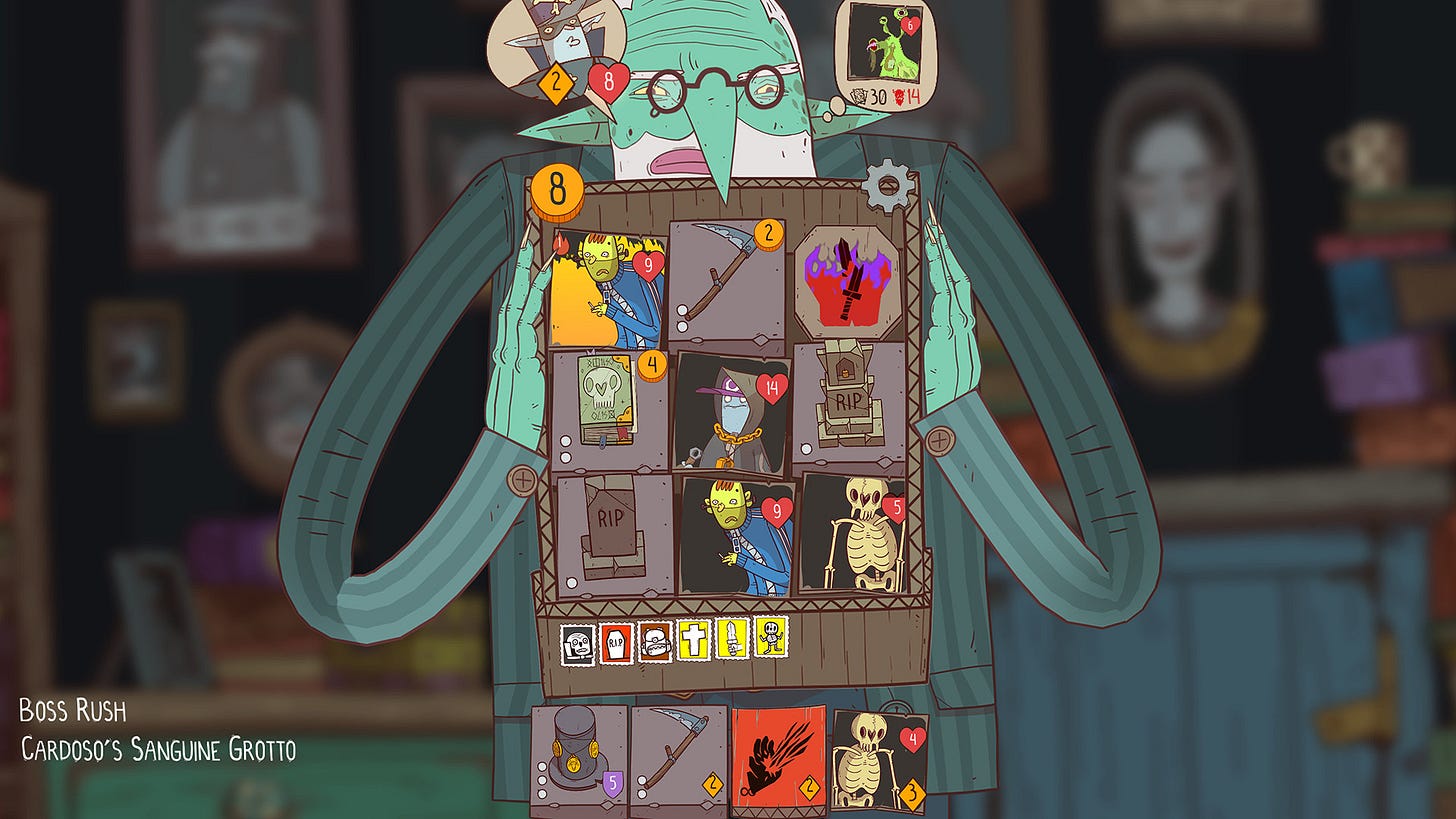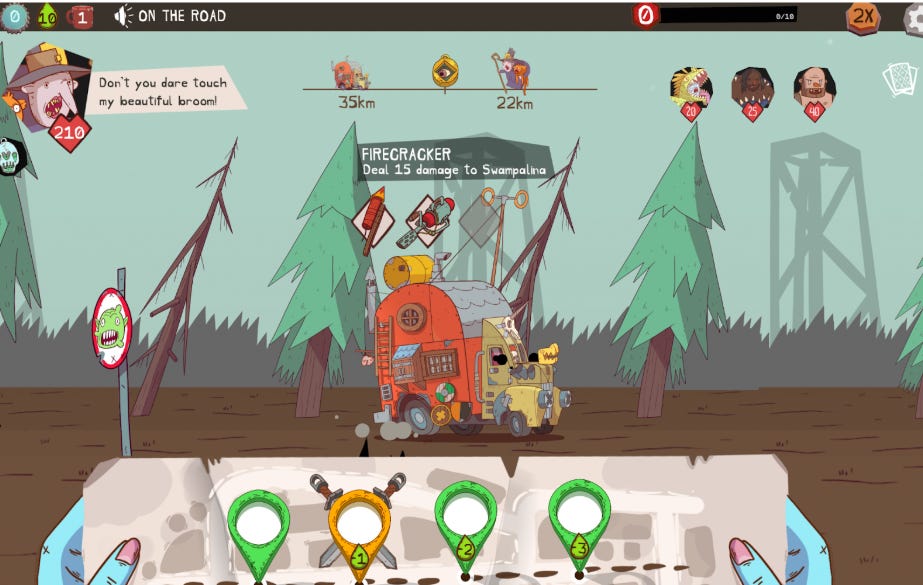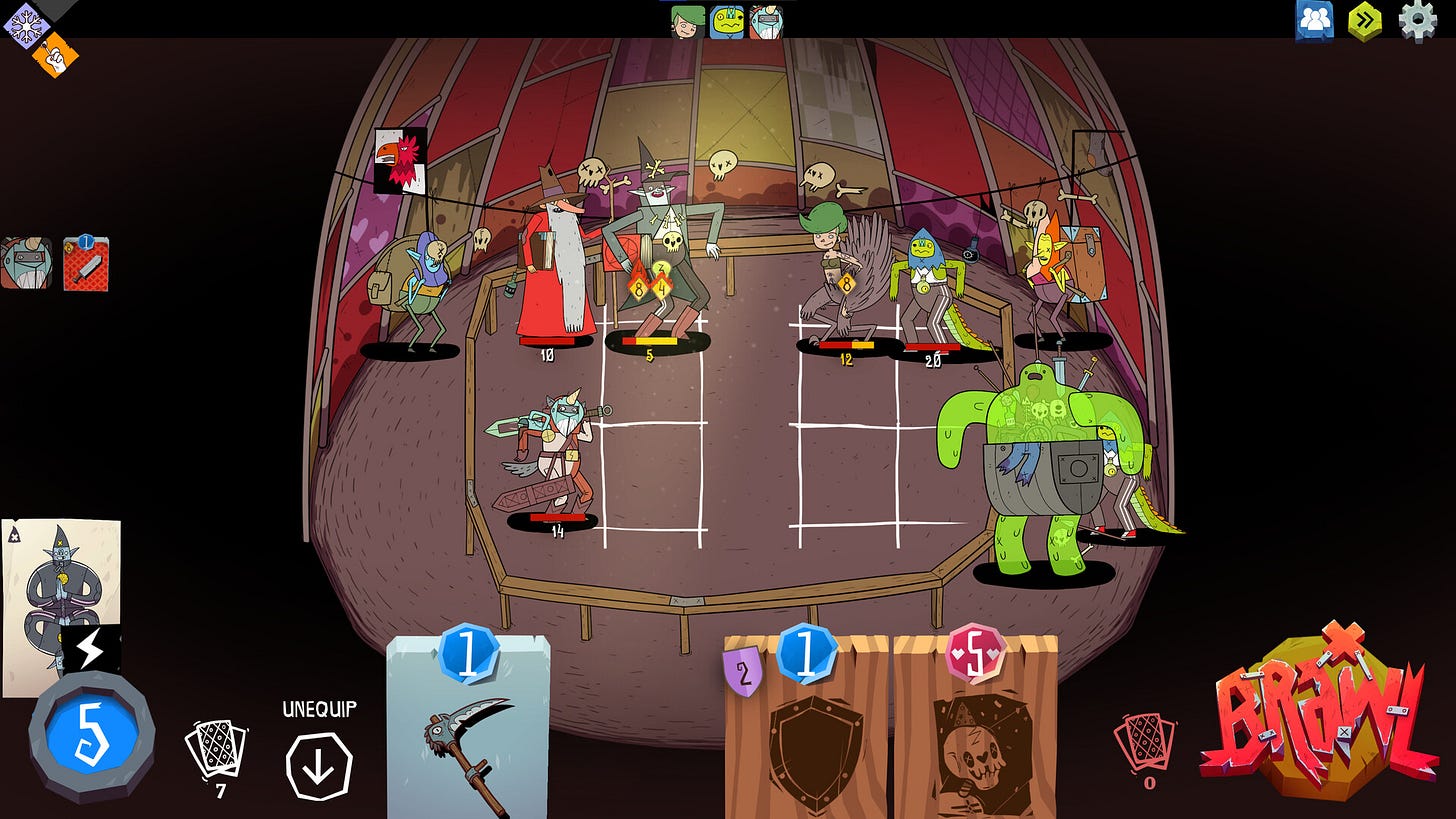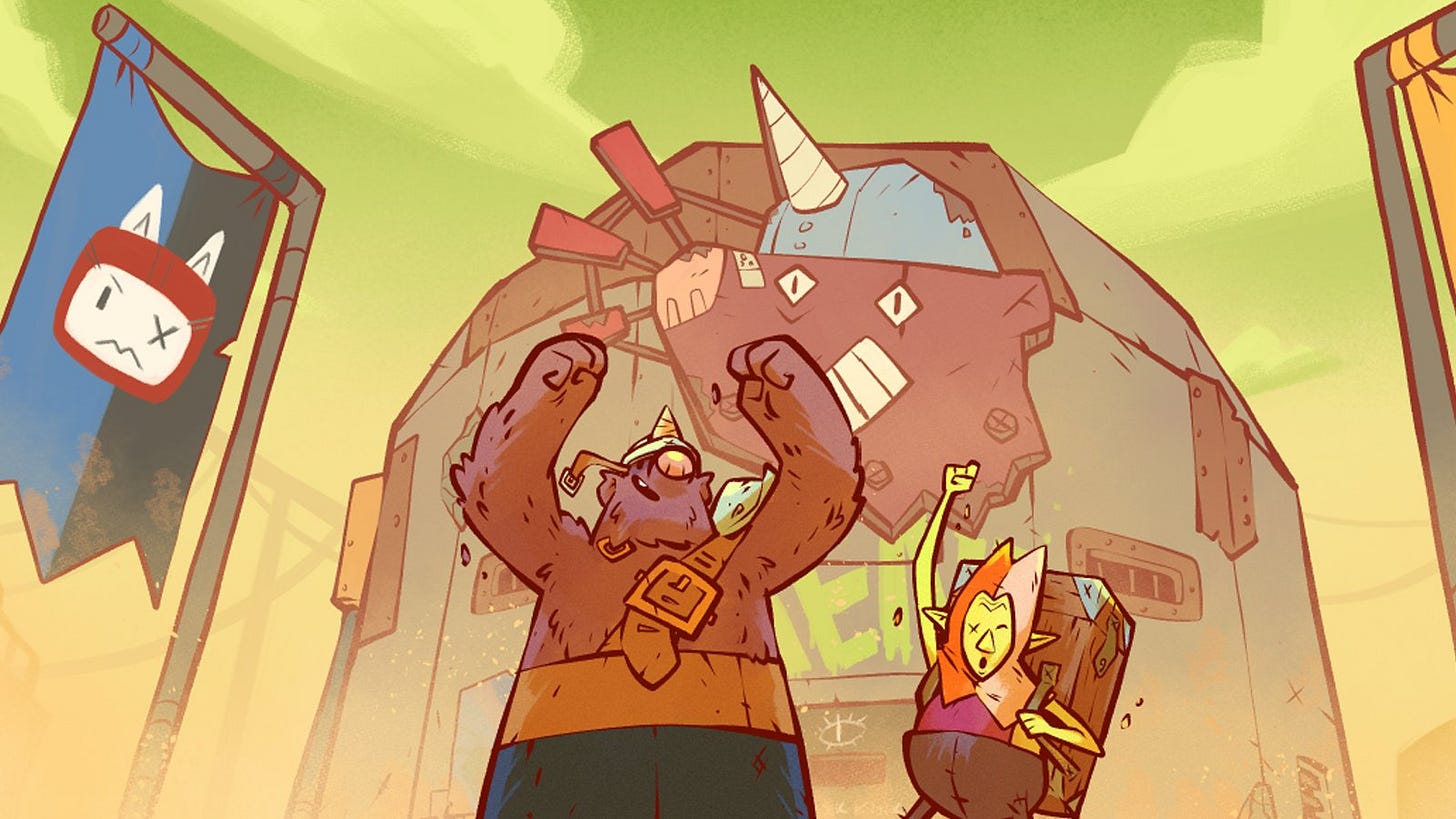Although Bramble Royale hasn’t quite released yet, the end of development is finally in sight after a multi-year development cycle. I wanted to provide some insight into the development process, discuss how game development is rarely a straight line, and share some learnings from the experience.
Who am I?
I’m Eric Farraro - game designer and programmer for the Meteorfall series of games (Meteorfall: Journeys, Krumit’s Tale, and Bramble Royale). I’m one-half of Slothwerks, a small indie game dev studio. The other half is Evgeny Viitman, who does all the art an design.
Evgeny and I both work full-time at our respective jobs. I’m a Director of Engineering in tech, and Meterofall has been my hobby project since 2017. I was fortunate enough to randomly find Evgeny on Behance, when I was trying to commission some art for the first Meteorfall game. I immediately fell in love with this style and we’ve been collaborating ever since.
I live in California and Evgeny lives in Spain, so most our communication about the game is async over Discord.
Part-time Game Dev
Developing games part time can be challenging in terms of time management, but has a lot of advantages that I’ve come to appreciate.
For Bramble Royale, I spent about $60,000 USD on development costs, including additional artwork, voice acting, localization, sound design, etc… Because I receive a salary from my full-time job, I’m able to put much of the revenue from the previous Meteorfall games into the next project. This allows me to build the game exactly the way I want to, without depending on outside financing, rushing development, or worrying about whether Bramble will pay the bills.
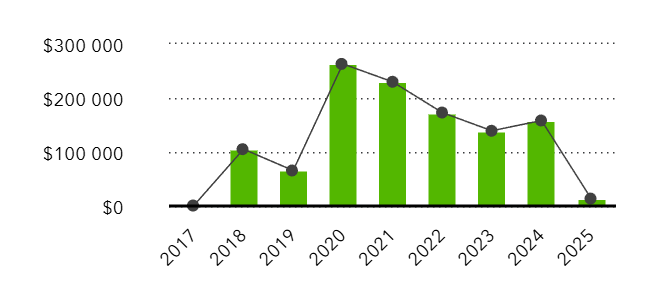
I’m a morning person, so I like to get some programming done before I start my day job. A typical day involves waking up around 7am, writing code for an hour or two, before starting my commute. Sometimes, but not always, I’ll do a bit more additional work in the evenings. This is doable, drawing mostly from time I might spend playing games or watching Netflix - but it does require an intense level of self-motivation to stay focused, because I don’t “need” to do it. I work on Bramble 7 days a week, for an average of ~1.5 hours per day.
Part-time game development not the right solution for everyone, but for some people thinking about taking the plunge into game dev and aren’t sure if they can make it work, trying to ship something while working full-time is a potentially viable path.
The Evolution of Bramble Royale
The early versions of what later evolved into Bramble Royale were completely different.
There were a number of painful checkpoints, discussed below, where I realized that a certain design path was a dead end. In some cases, this meant throwing away hundreds of hours of work.
I was particularly frustrated because the development cycles for Meteorfall and Krumit’s Tale were so short by comparison. Although I’d improved significantly as a game developer and designer, my ambitions and standards increased equally. Compared to Meteorfall or Krumit, Bramble has better visuals, significantly more cards, and overall, was just more complex to develop.
The quality bar for indie games and deck builders has also increased substantially. Since the release of Slay the Spire in 2017, the genre has just exploded with too many games to play. There are dozens of highly polished deck builders available today that weren’t a few years ago. Many players have grown bored of new titles that don’t push the envelope.
The result is that Bramble Royale had a meandering development path that experimented with many concepts, trying to find ‘the sauce’, over a long 4-5 year development period. I’m super proud of where we ended up, but we definitely didn’t the easy path.
Artifacts & Accessories
One of the concepts I spent a lot of time but couldn’t find a way to make work was this idea of a ‘road' trip’ where you’d take a ride in Krumit’s van to go around fighting battles and collecting artifacts. Similar to games like FTL, there resources resources like fuel to manage. In one version of this concept, you were racing Meteorfall villains to reach the artifact first, and you could deal damage / obstruct their progress as you made your way there.
Thematically, I still think it’s a really cool idea but I couldn’t make it fun.
Battles were team based and inspired somewhat by Monster Train in terms of how they resolved. One of the weirder mechanics was that (similar to Meteorfall) you could only play the top card (the dagger in this case) or choose to skip it, for a cost. Doing so would rotate the diamond / wheel, drawing a new card from your deck and moving a new one into the top position.
I never really fully explored this ‘rotation’ mechanic but I also don’t think it really had legs. It was interesting but it wasn’t as fun as I thought it might be.
Overall, I worked on this concept for most of 2021 before shelving it in 2022.
Elden Souls
Around this time, demotivated with the current concept, I took about a month off from game dev and just played Elden Ring.
I came back with a new concept after Elden Ring that I cheekishly nicknamed ‘Elden Souls’. I was really into the idea of positoning / attack timing / enemy patterns, which are key Souls-like elements. The exercise was: how can I build a turn-based card game with those themes?
The concept I started with was kind of like Megaman Battle Network, but turn based. You’d play a certain number of cards, and then the enemy would get to act. The enemies had the concept of telegraphing their attacks / attack patterns - so as you fought an enemy, you’d start to understand their moveset and could predict in advance how to react (side note: Death Howl [Steam] looks like a very interesting game that explores the feel I wanted to capture)
Around this time, I also enlisted some help from Evgeny to brainstorm a new design for this new project, which eventually became known as Bramble Royale. You can see that this early concept looks pretty close in many ways to the final product! This sketch is from June 2022 - about 3 years ago!
In April 2023, I decided to play test the concept with Etsy8nine, a popular indie streamer. He has a service called ‘The Game Doctor’ where he’ll play your game and give feedback about it, with a very analytical lens.
Watching Etsy play the game was quite painful. The 1v1 turn-based battles limited the design space and the card designs felt really basic. Etsy was analytical in his approach, confirming what I kind of new in my gut: the game just wasn’t very fun. I appreciated his candid feedback because I don’t need someone to fluff my ego - I want someone to tell me if the game I’m working on is going to launched to ‘Mixed’ reviews on Steam.
I didn’t see a way to salvage the current design, so I thew away a bunch of work for the second time and started to brainstorm how to fix the game.
Bramble Royale
By May 2023, I had conceived of the concept that was very close to the final version of Bramble Royale. I drew some inspiration from another indie game releasing around that time - Wildfrost - which I thought had a lot of really interesting and fresh ideas on the deckbuilder genre.
You could say that development on the modern version of Bramble Royale really took place from May 2023 through Jan 2025.
Some of the key ideas that finally clicked to make the concept work for me:
Moving from a 1v1 battle to team-based greatly increased the complexity of the design space to work with
Drawing a new card after playing one. Helps make the game feel fast-paced
Grid-based system. I didn’t want to do a full-on tactical combat game, but the ‘micro tactics’ positoning turned out really fun for Bramble.
1900 hours & 3100 git commits later later…
I track all of the time I spend on Bramble Royale development. I include any task that I spend time on. For the vast majority of the 1900 hours, it’s spent on game design & programming. It also included animating the trailer, chatting with the team doing localization, looking up influencers to contact, and various other tasks.
I have a weekly goal of about 10-12 hours a week spent on Bramble. I almost always achieve that goal and sometimes go over (as much as 20 hours during holidays like Christmas) but I push myself really hard to find the time to reach that goal. Like any habit, spending time working your side project is easier when you keep up the habit reliably.
Of those 1900 hours, about 700 were ‘wasted’ on some of the aforementioned game directions that didn’t pan out. It’s always a shame to throw away hundreds of hours of work, but sometimes you have to have the mental fortitude to take a step back and acknowlege the sunk cost of the work. In hindsight, I’m grateful that I didn’t keep going down the wrong path and ending up with a subpar game.
What’s Next for Meteorfall?
Our current roadmap is roughly:
February: Bramble Royale Next Fest demo debut
Q1: Launch Bramble Royale on Steam
Q2: Launch Bramble Royale on iOS / Android
H2: Bramble Royale Content updates
H2: Start next Meteorfall game
Still got a bit of work left to go on the launch of Bramble, but we’re very close. Stay tuned - and thanks for reading!

